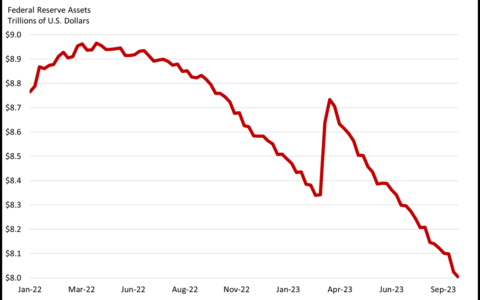With the stock market rallying impressively over the past year, investors might be inclined to overlook the potential of bonds. After all, compared to the allure of double-digit returns in equities, the prospect of a 5% yield on a high-quality bond may seem less enticing. However, there are compelling reasons why investors should consider adding bonds to their portfolios, especially in the current market environment.

Bond Yields: A Source of Stability
While stock market volatility can keep investors on their toes, high-quality bonds offer a degree of stability and income generation. Despite the recent rise in yields, the average yield on bonds still remains attractive. According to Jeff Moore, manager of the Fidelity® Investment-Grade Bond Fund (FBNDX), high-quality bonds now offer yields higher than they’ve been in years.
Just two years ago, the average yield of the Bloomberg US Aggregate Bond Index was a mere 1.42%. Today, that figure has surged to 5%, presenting an appealing opportunity for income-seeking investors. Intermediate-maturity investment grade bond yields average 5.35%, while longer maturities offer an average yield of 5.65%. These high yields not only provide a steady income stream but also enhance the attractiveness of bonds, even in the face of potential interest rate changes.
Capital Appreciation Potential
Beyond their income-generating capabilities, bonds also offer the potential for capital appreciation. Despite concerns about rising interest rates impacting bond prices, Moore believes that today’s high yields mitigate much of the interest rate risk associated with longer-duration bonds. As yields have increased, bond prices have remained relatively low, creating opportunities for investors to capitalize on potential price gains in the future.
Diversification Benefits
In a market where uncertainty looms large, diversification is key to managing risk. While stocks have demonstrated their ability to deliver rapid gains, they are also susceptible to sudden downturns. Bonds, on the other hand, can act as a stabilizing force in a portfolio, helping to cushion the impact of stock market volatility.
For investors approaching retirement or seeking to preserve capital, the stability provided by bonds can be invaluable. As baby boomers transition out of the workforce and focus on protecting their wealth, bonds offer a reliable source of income and capital preservation.
Navigating Interest Rate Concerns
One of the primary factors influencing bond prices is interest rates, particularly those on 10-year US Treasury bonds. While the Federal Reserve’s efforts to curb inflation have resulted in higher bond yields, the prospect of rate cuts remains uncertain.
Despite the potential for future rate cuts, market indicators suggest that any changes are unlikely to occur before the third quarter of 2024. For investors hesitant about the timing of rate cuts, the current environment presents an opportune moment to capitalize on the attractive yields offered by bonds.
How to Invest in Bonds
Investors interested in adding bonds to their portfolios have several options to consider:
- Bond Mutual Funds or ETFs: Investing in a bond mutual fund or exchange-traded fund (ETF) provides access to a diversified portfolio of bonds managed by professionals. These funds offer convenience and expertise, making them suitable for investors seeking broad exposure to the bond market.
- Individual Bonds: For investors with sufficient resources and expertise, purchasing individual bonds allows for greater customization and control over their investment portfolio. However, this approach requires diligent research and monitoring to mitigate issuer-specific risks.
- Separately Managed Accounts (SMAs): SMAs combine the benefits of professional management with the flexibility of individual bond selection. Managed by investment professionals, SMAs offer personalized portfolio management tailored to investors’ specific needs and objectives.
Conclusion
In a market characterized by uncertainty and volatility, bonds offer stability, income, and diversification benefits that can enhance portfolio resilience. Despite the allure of high-flying stocks, investors should not overlook the potential of bonds to provide a reliable source of returns and capital preservation.
By considering the advantages of bonds and exploring the various investment options available, investors can construct well-balanced portfolios that withstand market fluctuations and deliver long-term financial success. Whether through bond mutual funds, individual bonds, or separately managed accounts, incorporating bonds into your investment strategy can help you achieve your financial goals with confidence.
Author:Com21.com,This article is an original creation by Com21.com. If you wish to repost or share, please include an attribution to the source and provide a link to the original article.Post Link:https://www.com21.com/why-buy-bonds-now-exploring-the-benefits-in-todays-market.html









